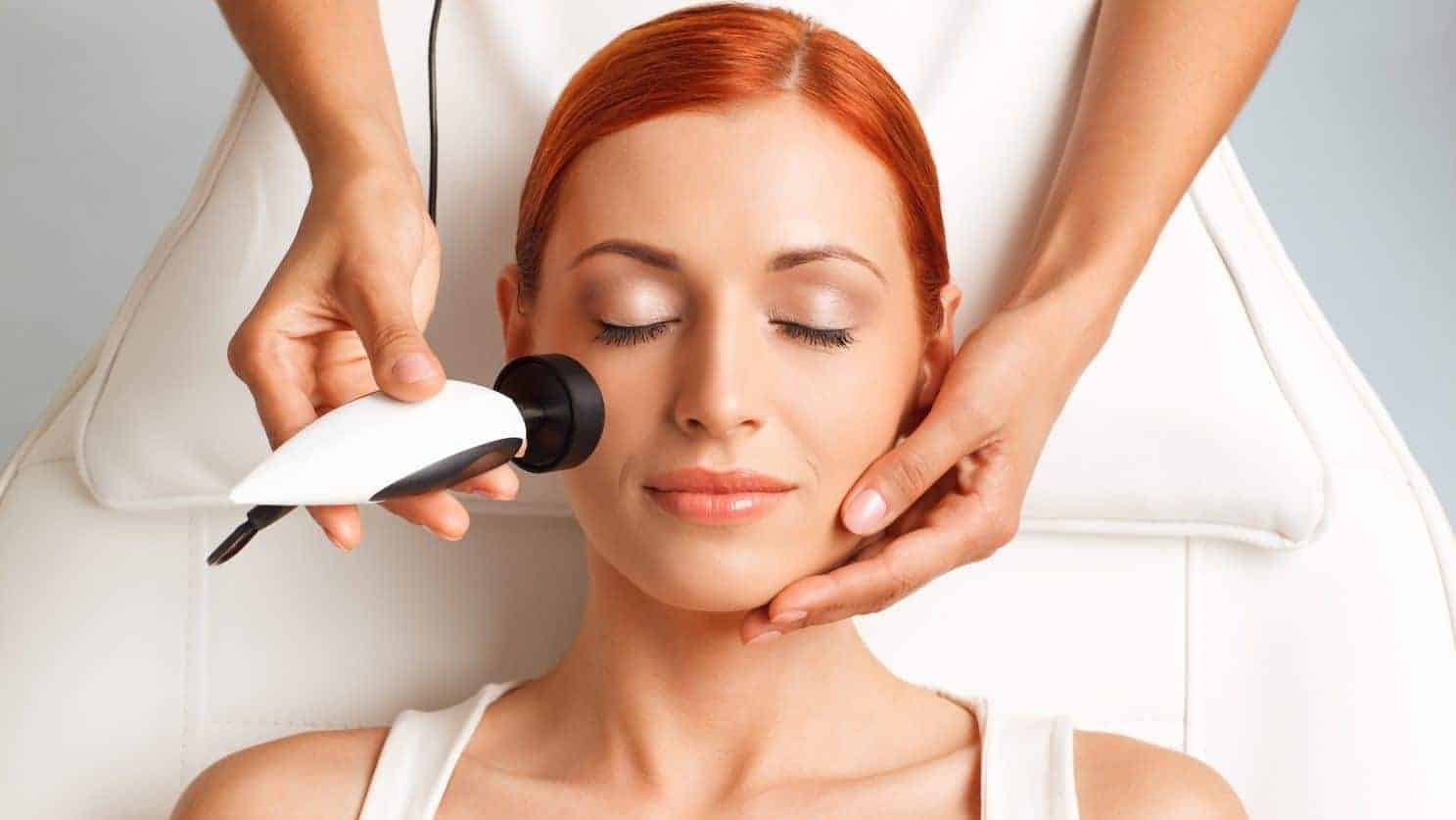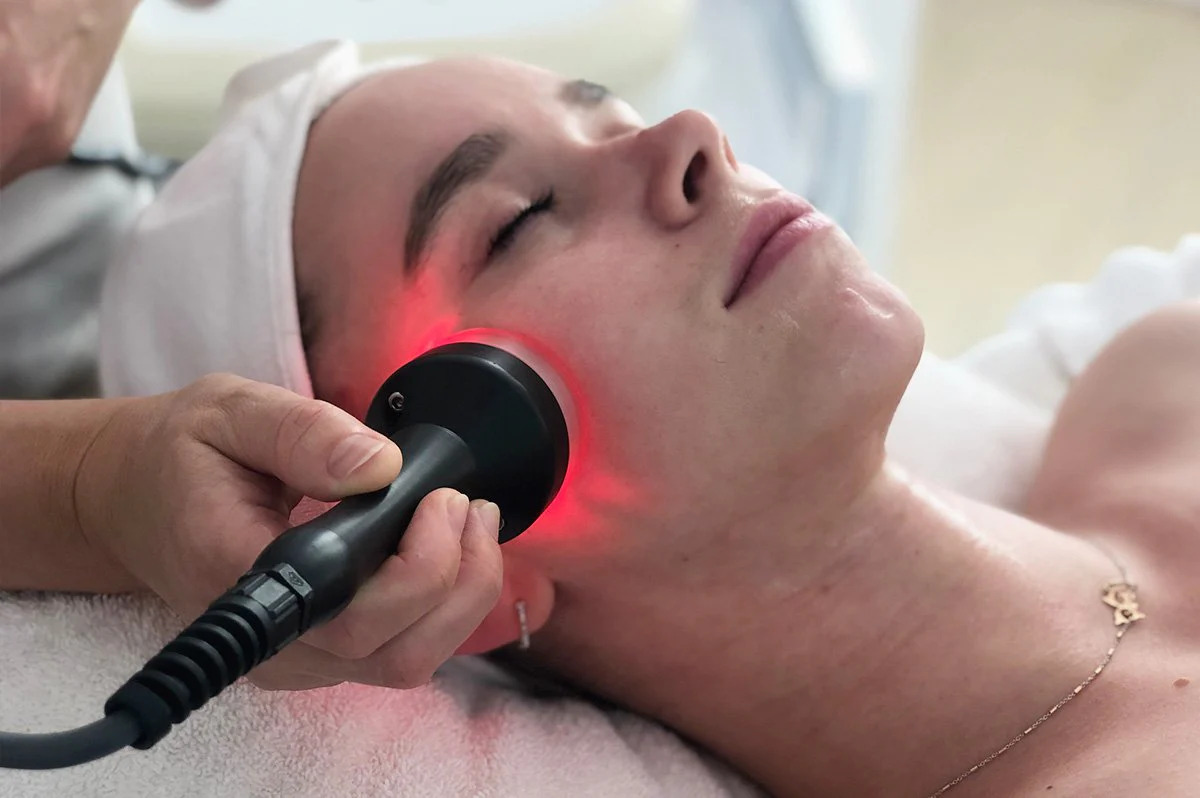The appearance of having youthful skin is something that people are continuously seeking. Among the various treatments and methods, red light therapy has increased in popularity thanks to its many possible benefits for rosacea, acne scars, pain, etc.
However, what does red light do for skin? This innovative method exposes your skin to low-level red or near-infrared light, which the cells absorb and might trigger many beneficial responses. You can do the treatment by using various RLT devices.
Whether you already have a device or want to learn more about it before you buy it, continue reading, as we have provided everything you need to know.
Let’s get started!

What Is Red Light Therapy?
Red light therapy (RLT) is a procedure that utilizes low wavelengths to potentially cure acne, wrinkles, scars, and redness while enhancing your skin’s appearance. It is also said to possibly help with other health problems.
Recently, there has been a lot of discussion on the Internet concerning the efficacy of red light treatment for various medical purposes, as well as a lot of continuing research, the publication of minor studies, and other related activities. Red light treatment has been the subject of few studies, although its effectiveness is yet unknown.
Moreover, you might have also heard of the following names for red light therapy:
- Laser light therapy at a low level
- Laser therapy with low-power
- The use of a soft laser
- Cold laser
- Photonic stimulation and biostimulation
- Photobiomodulation and phototherapy
How Does Red Light Therapy Work?
The “power plant” in your cells, called the mitochondria, is thought to be what makes red light therapy work.
With more energy, other cells can do their functions better, like repairing skin, speeding up the growth of new cells, and making the skin look younger. More specifically, certain wavelengths of light are taken in by certain cells, making them work.

What Does Red Light Do for Skin?
If you’re wondering what red light does for the skin, we have provided you in this article with information on several benefits that you should know.
Let’s discover!
May reduce pain and swelling
The process of inflammation may aid your body’s ability to recover and fight off infections, but long-term inflammation in the body has been linked to several health problems, such as:
- Heart disease and diabetes
- Cancer
- Depression
- Bowel diseases
Studies have shown that red light therapy may reduce inflammation by lowering the levels of molecules called pro-inflammatory cytokines that cause inflammation.
May help get rid of acne
Since light can penetrate deep into the skin, light-based and laser therapies are often used to treat acne.
The red light goes after your sebaceous glands, which are small tubes that make sebum, an oil that clogs pores and causes acne. The effect of the light is to make the sebaceous glands less inflamed, which may make acne less visible.
Some research shows that red light might work best as a treatment for acne when it is combined with a drug called a photosensitizing agent. This is especially true for people whose acne doesn’t get better with topical treatments or oral antibiotics. Alpha-lipoic acid (ALA) is a photosynthesizing agent that can be bought over the counter.
May reduce signs of aging
Most of your skin is made up of a protein called collagen. It keeps your skin from sagging and makes it look and feel full. The body naturally makes collagen, but sun exposure, smoking, pollution, and getting older all reduce its production.
The skin loses its elasticity and starts to look saggy and wrinkled. If you want to experience this, you should buy some best red light therapy devices for your skin and possibly make your skin look fresh without any fine lines and wrinkles.
A 2014 study found that exposing the whole body to red light for 30 weeks, twice a week, increased the amount of collagen in the faces of the people who took part and made wrinkles and roughness less noticeable.
May reduce the discomfort caused by arthritis
Some types of arthritis may be less painful by using red light therapy:
- Osteoarthritis is a disease that makes the fingers, knees, and hips weaker over time.
- Rheumatoid arthritis is an autoimmune disease that causes joint pain and inflammation.
One small study from 1992 found that red light therapy potentially helped people with degenerative osteoarthritis in both knees feel less pain by more than 50%.
A more recent study on rats in 2013 found the same thing – that low-level laser light made knee joints with osteoarthritis less inflamed. Researchers state that more research needs to be done before light therapy can be called a “valid therapy”.
May be good support for wound healing
Even though there isn’t much research on adults, studies on animals and in vitro suggest that red light may speed up healing wounds on the skin.
Treating wounds with RLT, according to some studies, may help the wounded area of the body in different ways, such as:
- Fewer inflammatory cells
- Increased number of fibroblasts (connective tissue cells that produce collagen and fibers)
- Creating collagen
- Angiogenesis (forming new blood vessels) and tissue formation
All of these things are needed for a wound to heal.
May help with hair growth
Androgenetic alopecia, a genetic condition that causes hair loss, is the most common one in both men and women, affecting an estimated 80 million people in the United States.
A small study from 2013 found that laser light therapy with red light helped men with androgenetic alopecia have more hair.
In the study, the participants were treated every other day for 16 weeks, for a total of 60 sessions that lasted 25 minutes each.
Is Red Light Therapy Safe?
Besides the benefits RLT offers to the skin, many people worry about its safety. Red light therapy seems safe and has no known side effects, at least when used as directed and for a short time.
This therapy may be safe, doesn’t hurt, and isn’t as harsh as some skin treatments. UV light from the sun or tanning booths can cause cancer, but this light is not used in RLT. You can also find out if red light therapy is good for your face.
However, if products are used incorrectly, like too often or not as instructed, your skin or eyes could be hurt if they aren’t protected. We don’t yet know if red light therapy devices are safe in the long run.
The safest thing to do is to see a dermatologist or a qualified, trained cosmetic therapist. A dermatologist can ensure that your skin problem is what you think it is and advises you about red light therapy and other possible treatments.

Hello! I’m Nicky Rodgers.
Almost a decade ago, I got excited about the idea of employing alternative methods like red light therapy to create a healthier life.
To learn more about it, I did my Certified Light Therapist course from Photonic Therapy Institute and started looking into the intricacies of how light therapy influences several bodily processes. Before I knew it, my interest had become an obsession which resulted in this extensive blog.
Here, I offer countless well-researched articles to help you understand the benefits and uses of light therapy. I hope this information gives you a head start in your wellness journey.
